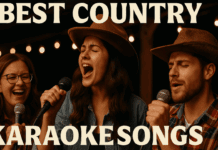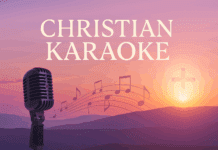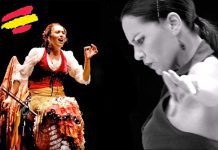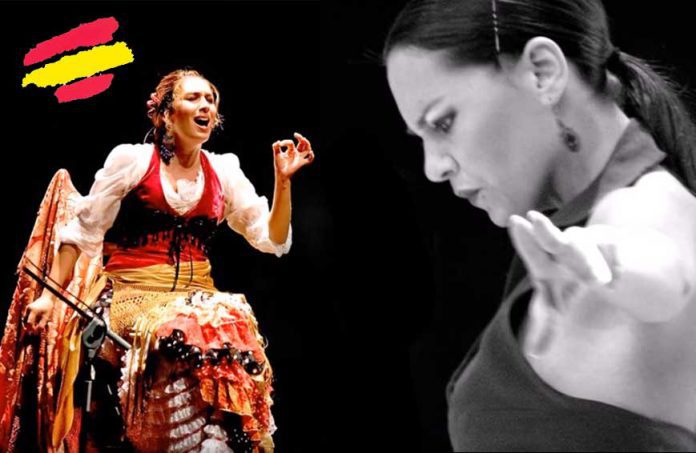
In this post
- 1 Beginnings of Flamenco in Spain
- 2 Flamenco and its Artistic Variants:
- 3 Flamenco as an International Phenomenon
- 4 Flamenco, the quintessential art
- 5 Origins and Technical Aspects of Flamenco Music
- 6 Greatest Spanish Flamenco Songs in History
- 7 India Martínez – 90 minutos
- 8 Lolita – Sarandonga
- 9 El Barrio – “Pa los flamencos”.
- 10 List Spanish Flamenco Songs
- 11 Enjoy much more Online Karaoke!
Flamenco and its songs are considered a unique blend of influences and musical complexity that originated in the southern part of Spain
Beginnings of Flamenco in Spain
Flamenco and its songs were born from the expression of a persecuted people in the southern regions of Spain. It’s considered a unique blend of influences and musical complexity. In Spain, in the year 1492, the Catholic Monarchs, King Ferdinand V and Queen Isabella, ordered that all citizens living in Spain convert to Catholicism. Those who didn’t comply with this proclamation were punished in various ways, with the most severe being death by fire. Gypsies, Muslims, Jews, and anyone living in Spain were forced into Catholicism. It’s believed that the cause of this decree was the different ethnic groups coming together to help one another, and within this cultural fusion, flamenco was born. Flamenco became the expression of anguish and protest against oppression.
Flamenco and its Artistic Variants:
Singing, dancing, and guitar playing. Additionally, there are usually members in flamenco who provide handclaps, accompanying the musicians and dancers by creating rhythmic patterns with their hands. The relationship between the artists is similar to that of Jazz; there’s a basic structure to follow, but at its core, it’s an improvised technique, with singing at the heart of the flamenco group.
The dancer physically interprets the words and emotions of the singer through their movements, which include foot percussion and intricate hand, arm, and body movements.
The guitarist provides accompaniment to the singer and dancer, emphasizing their vocal lines and melodies.
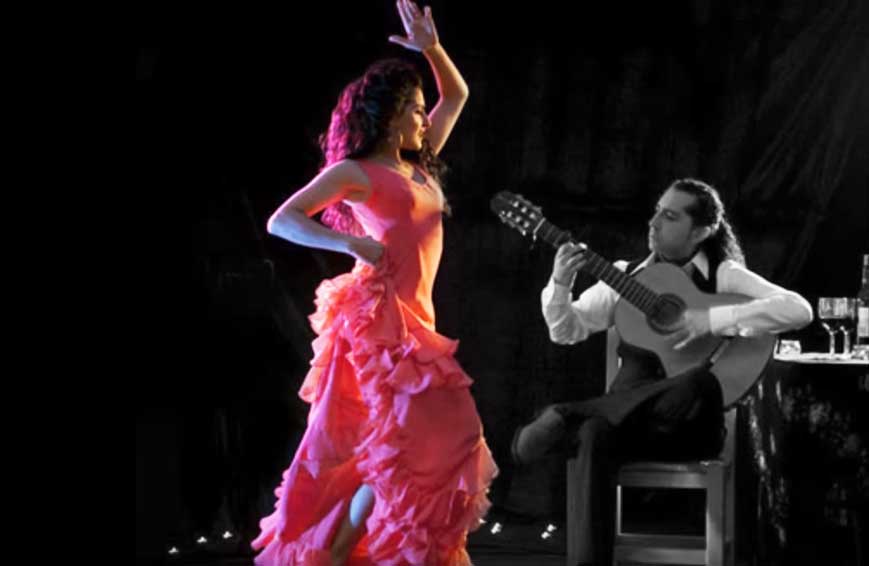
Spanish Flamenco songs can be classified into 3 groups.
He deeper and more profound forms are often known as “cante grande,” typically accompanied by lyrics where the singer expresses feelings of deep anguish in motion.
Lighter and more frivolous forms are called “cante chico.” These are forms that don’t fit into any category but are somewhere in between, classified as intermediate singing.
Most studies agree that the birthplace of flamenco is Jerez de la Frontera, a small city in the south of Spain. However, due to the nomadic nature of the gypsies, who moved from town to town selling their goods and doing occasional work, flamenco quickly took root in several Andalusian cities, including Seville and Granada.
Flamenco went through various phases in the 18th and 19th centuries. Although the gypsies didn’t achieve respect and honor for the art form until many years later, they have always been considered the finest interpreters of flamenco arts.
Late 19th century
Towards the end of the 19th century, it entered the commercial realm, leading to the evolution of professional artists, where flamenco could be heard and seen publicly. Many of the more primitive forms declined, and some were completely lost, while other more optimistic forms gained popularity.
Commercialization continued until the 1950s when the influence of tourists after the Spanish Civil War threatened to destroy the art completely. Fortunately, during this same time, several singers rediscovered the ancient forms and interests that established flamenco as an art form as well as a commercially viable music style.
The organization of flamenco festivals in the 1970s and 1980s fueled this revival, although some consider these festivals to have stifled the intimacy and spontaneity of flamenco. Nonetheless, they undoubtedly opened up the art to a broader audience and provided opportunities for new artists.
Flamenco as an International Phenomenon
Today, flamenco is nothing short of an international phenomenon. The city where the first cries and songs of flamenco were heard, Jerez, now hosts an annual flamenco festival that attracts thousands of visitors from around the world. Flamenco enthusiasts can be found in almost every country.
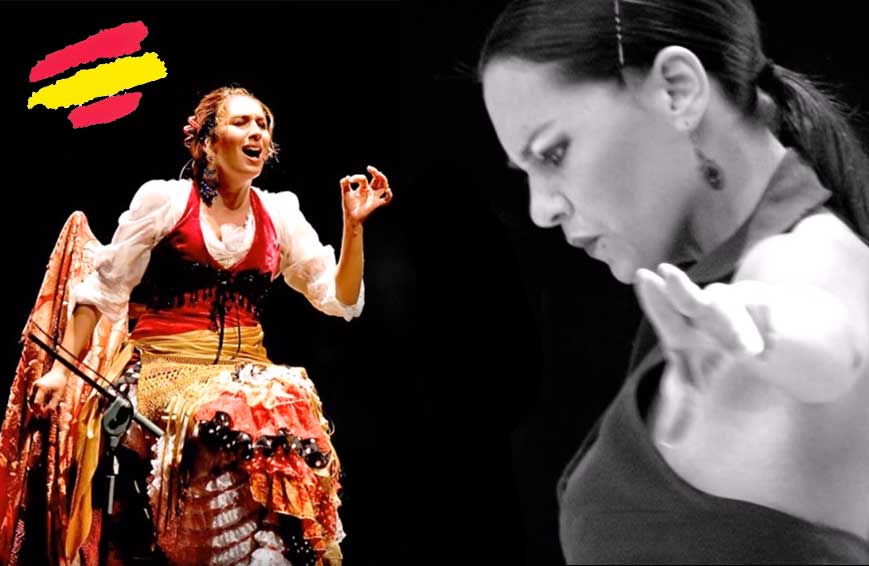
Flamenco, the quintessential art
Artists like Pastora Pavón, Manuel Vallejo, or Antonio “El Chaqueta” elevated the bulería to an unimaginable height. It was the arrival of that little blond gypsy from the island, the master Camarón, accompanied by the greatest guitarist, Paco de Lucía, that brought that singer to the very sky itself, composing and performing the best flamenco songs in history. The etymology of the word is still not entirely clear, possibly deriving from terms like “burla,” “bulla,” “bolero,” or “fulero” or “bulero.” According to flamenco art studies, this song might have originated in Jerez or Cádiz. What we do know is that in 1910, the term “bulería” was heard for the first time on a recording, in a record by “La Niña de los Peines.”
It’s also true that a few years earlier, specifically in 1906, the father of “El Pena” recorded some “chuflas,” which were nothing more than a bulería-style song, although not yet called that. Any tonality is suitable for the bulería, as it’s predominantly characterized by rhythm. However, the flamenco mode is the most used in this style. The bulería’s rhythm is the pinnacle of flamenco rhythm. It’s the same rhythm we saw in the soleá and alegría, albeit faster and more airy. Not everywhere is the bulería marked the same way; depending on the region, the accents can be shifted, but always within the 12-beat characteristic rhythm of this musical genre called flamenco.
Origins and Technical Aspects of Flamenco Music
The name “soleá” comes from “soledad,” which means solitude. It’s a song that uses verses of three or four octosyllabic lines with assonant or dissonant rhyme.
According to most historians, it was a song originally born for dancing, although later it took on a prominent role as a standalone vocal style. It’s considered one of the classic styles of flamenco. The “Soleá de Alcalá” is a variant created by Joaquín el de la Paula and later popularized by many subsequent singers, including the notable Juan Talega, his nephew.
The themes covered by the soleá are diverse. It can address matters of love, misfortune, deceit, deep thoughts, and in this case, local aspects related to the Sevillian region of Alcalá de Guadaíra. This song and its compositions fit within a 12-beat rhythm. The essential and traditional accents fall on beats 3, 6, 8, 10, and 12.
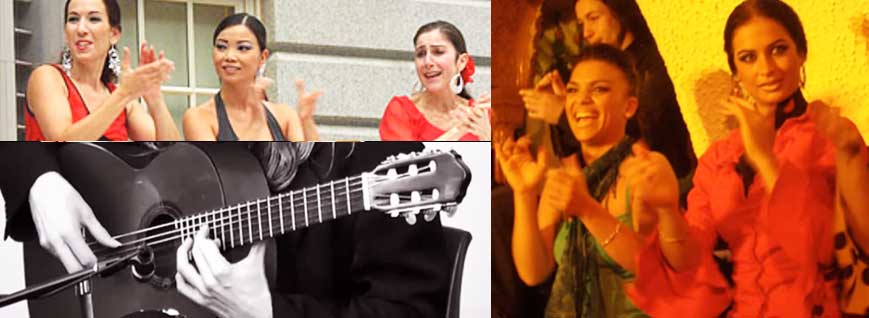
This song moves melodically within the “MI flamenco” tonality. It’s a specific tonality that gives it a special and highly identifiable character compared to other music genres.
If we descend a Major 3rd from this E, we arrive at the major tonality of C and its relative minor: A minor. In the soleá song, we might recognize these neighboring tonalities, but always ending up on our flamenco tonic:
Distribution of Male and Female Voices
Male voices usually perform this song in the flamenco tonalities of A, A#, and B (5th, 6th, and 7th from above). Female voices can sing it in the flamenco tonalities of C, C#, and D (3rd, 4th, and 5th from middle). Just like before, if we descend a Major 3rd from each of these tonalities, we’ll arrive at the neighboring Major and minor tonalities.
Greatest Spanish Flamenco Songs in History
KaraokeMedia, just like with many other music genres, has invested time, talent, and resources in producing spanish flamenco songs for karaoke singing. Currently, our brand can boast a catalog of around 200 songs, including video karaokes and musical playbacks. You just need to take a look at our catalog in our karaoke section or directly play some of the tracks we have below:
SING WITH KARAOKEMEDIA SOME OF OUR BEST FLAMENCO GENRE SONGS.
India Martínez – 90 minutos
Lolita – Sarandonga
El Barrio – “Pa los flamencos”.
List Spanish Flamenco Songs
Enjoy much more Online Karaoke!





